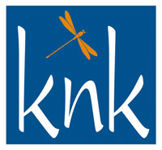
In February 2023, the Which? team were thinking about how to launch the brand on TikTok. What would get people excited? They chose a video about potholes. It worked. The 26-second short, ‘If a Pothole Damages Your Vehicle, This is What You Should Do’ racked up 1.3m views. “We struck gold with our first video,” says Hannah Ballantyne, senior social media manager. “The topic had wide appeal — lots of people were fed up with potholes. We offered high-quality, actionable advice, expressed clearly and succinctly.”
On screen, Grace Forell, executive producer, runs through five easy-to-follow steps, from taking photos of the pothole to keeping receipts of repairs. “The video had been one of our top-performing posts on Instagram, so we wanted to see if we could replicate the success,” says Grace. On Instagram, views peaked at 107,000. The TikTok response was better than they could have imagined.
Since then, several more Which? TikTok posts have had more than a million views, while others have easily had tens of thousands. The figures alone are reason enough for the team to have won ‘Best Use of Social Media’ at this year’s BSME Talent Awards. But the judges, chaired by Gideon Spanier, UK editor-in-chief at Campaign, were also impressed by the quality of the team’s output: the way the brand “cut through the noise of TikTok tutorials... standing out as a trusted voice in consumer affairs, while ensuring it remains relevant to a younger audience.”
Tried and tested
The squad of eight making up the Which? social media team were given six months from their TikTok launch to prove it was worth the brand investing time and resources in another platform. They were already looking after multiple accounts on Facebook, X, YouTube, Instagram, Threads and LinkedIn.
TikTok was not an obvious fit. When it launched in the UK in 2018, it was known for lip-synching and dance videos. Its creators and audience made the Instagram generation feel old. But like all platforms, it had started to evolve. Content was certainly now broader. Yet the age of the core TikTok audience was still much lower than the core Which? group. On TikTok, the largest age categories are 15 to 24 and 25 to 34. Across Which?’s social media channels, users tend to be between 25 and 45. The average Which? member is older still. For Hannah, the lack of overlap was a benefit: “It presented a brilliant opportunity to reach a wider audience.”
The way TikTok worked — showing users content they think they might like — could also work in their favour, she adds. “Regardless of the size of your following, you could post videos that went viral.” This meant they could have instant success.
Having immersed themselves in the platform, the team believed that within the TikTok community, there would be plenty of people with the “Which? mindset”. These are people who like to do their research before they splash out on purchases and make the most of what they buy. “Rather than a hard and fast demographic, it’s more of an attitude,” says Hannah.

The team thought carefully about what sort of videos to put up. “At Which?, we have an amazing breadth of content,” Hannah continues. “We had to think, which areas should we focus on? How do we position ourselves? How can we add value by showing this new audience the trusted advice that Which? has to offer?” Analysing other brands, from Citizens Advice and MoneySavingExpert to the Economist and the Guardian, offered initial ideas. “We thought, how could we adapt what they do? What would be right for us?”
The team built a business case for TikTok based on content themes, such as saving money, consumer rights and household hacks. “We knew we had strong content supported by our experts in these areas,” says Hannah. “We looked at the videos we had and thought, where can we build our followers?”
Clean sweep
Potholes was just the start. The real winner for Which? turned out to be dishwashers. ‘Five Things I Would Never Do as a Dishwasher Expert’ by Andrew Laughlin, a Which? journalist, has had more than 5.7m views. Experts, says Grace, are people who “live and breathe” dishwashers, air-fryers or laundry. They have often been part of the process when Which? tests products. The team thinks hard about the title of an expert, too: is Andrew a dishwasher or a kitchen appliance expert?
The evolution of the team’s laundry videos shows the value of specificity both in the expert’s title and the topic. As well as clean plates, Which? found that people liked clean clothes. ‘Five Things I’d Never Do as a Laundry Expert’ has had 128,000 views. ‘Five Things I’d Never Do as a Tumble Dryer Expert’ — a narrower take — has had nearly 170,000. “We’ve noticed that people like niche expertise,” says Grace. “That’s exactly what we can offer.”
Whatever videos Which? puts up must be in keeping with the brand values. “Today, everyone on social media thinks they’re an expert, but not everyone is,” says Hannah. “What we’re saying is fact. It’s backed up by hard research. It’s impartial. We’ve got a really valuable role to play in giving out trusted advice.”
When they’re planning posts, the social media team consider a vast array of factors: trending topics, content they’ve enjoyed from other creators, comments on past videos, product tests by Which? teams, the results of investigations, news stories and the time of year. “In autumn, we’ll put up our heating content,” says Grace. “That was huge for us last year and we’ll be looking to go even bigger. It will be everything from how to save a few quid to a few hundred quid.”
What they call “heating-adjacent” content, such as why you should never dry your clothes on your radiator, will go up, too. Some videos will be updated and repurposed. Others will be completely fresh, with ideas coming from big pitching sessions open to the wider Which? team. “Anyone can come up with an idea and shoot it,” says Grace. “The more voices, the better.”
Quick wins
Over the past eighteen months, the team has figured out a few ways to give their videos the best chance of success. As well as specific experts and content, people like videos of individual tips. “We can make quite a lot of content by separating tips into standalone videos,” says Grace. “Instead of five ways to save on heating bills, we might make five videos with one tip each.”

What not to do often outperforms what to do. Lists with odd rather than even numbers do better — they are perceived as more authentic. People also prefer videos shot on location — by a pothole, say, or a dishwasher. Posts must get straight to the point, too. The team estimates they have three seconds to convince the audience a video is worth their time.
Which? designers and the video team help give the posts the right look. “We’ve talked a lot about how far we go to make the videos recognisably Which?,” says Grace. “One of the main reasons we’re on TikTok is for people to find out about the brand, but we also want the videos to look native to the platform. On TikTok, you don’t see a lot of overproduced, heavily branded content. It’s very low-fi.”
Which? TikTok videos are a little more creative than they might be on the website or YouTube. “The presenters are livelier in delivering their lines, we’re more playful in the edits and we might add emojis,” says Grace. “That vibe of video does really well on TikTok.”
They’ve also found success with what they call “dynamic text videos”. These are short clips of someone filming their smart meter, for example, overlaid with a caption about taking a reading. “We wouldn’t post that on the website or YouTube because it doesn’t feel substantial enough, but for TikTok, it’s perfect,” says Grace. “It’s quick to watch and you get the benefit of the advice.”
A new reach
One video goes up a day, including weekends, between 4pm and 5pm. As much as possible, the team uses data to drive what to post when. “We’re always looking at how things have done and thinking about why they might have performed well or not,” says Hannah. “It’s a very data-driven approach.” And yet, data only takes the team so far. “TikTok has been one of the least predictable platforms for us,” Hannah adds. “Videos can grow slowly [in popularity] and then have a surge. It’s exciting.”
It could also be unsettling, if it weren’t for the team’s attitude. “You have to ride the waves and return with positivity, tweaks and new ideas,” says Grace. If a video goes under the radar the first time, the team might repackage it, giving it a different hook. “This year, we’ve gone from a pattern of hits and misses to more frequent hits because we’ve been learning along the way.”
The team’s TikTok success has helped them reach a younger group. On TikTok, where they have nearly 68,000 followers, their audience boasts the biggest proportion of under-25s compared to other platforms. They might also be reaching more men. Across their other social media, the audience tends to be skewed towards women. On TikTok, it’s relatively even.
Rather than try to monetise TikTok, Which? has plumped for brand awareness. “We’re warming people up to us,” says Grace. “As a heritage brand, it’s particularly important that we remain relevant to different demographics.” And if the platform goes out of fashion tomorrow, she adds, that might not be as important as it appears. “If TikTok has taught us anything, it’s to be resilient and agile. We’re now in a strong place to evolve, whatever the landscape is like in the future.”
This article was first published in InPublishing magazine. If you would like to be added to the free mailing list to receive the magazine, please register here.












